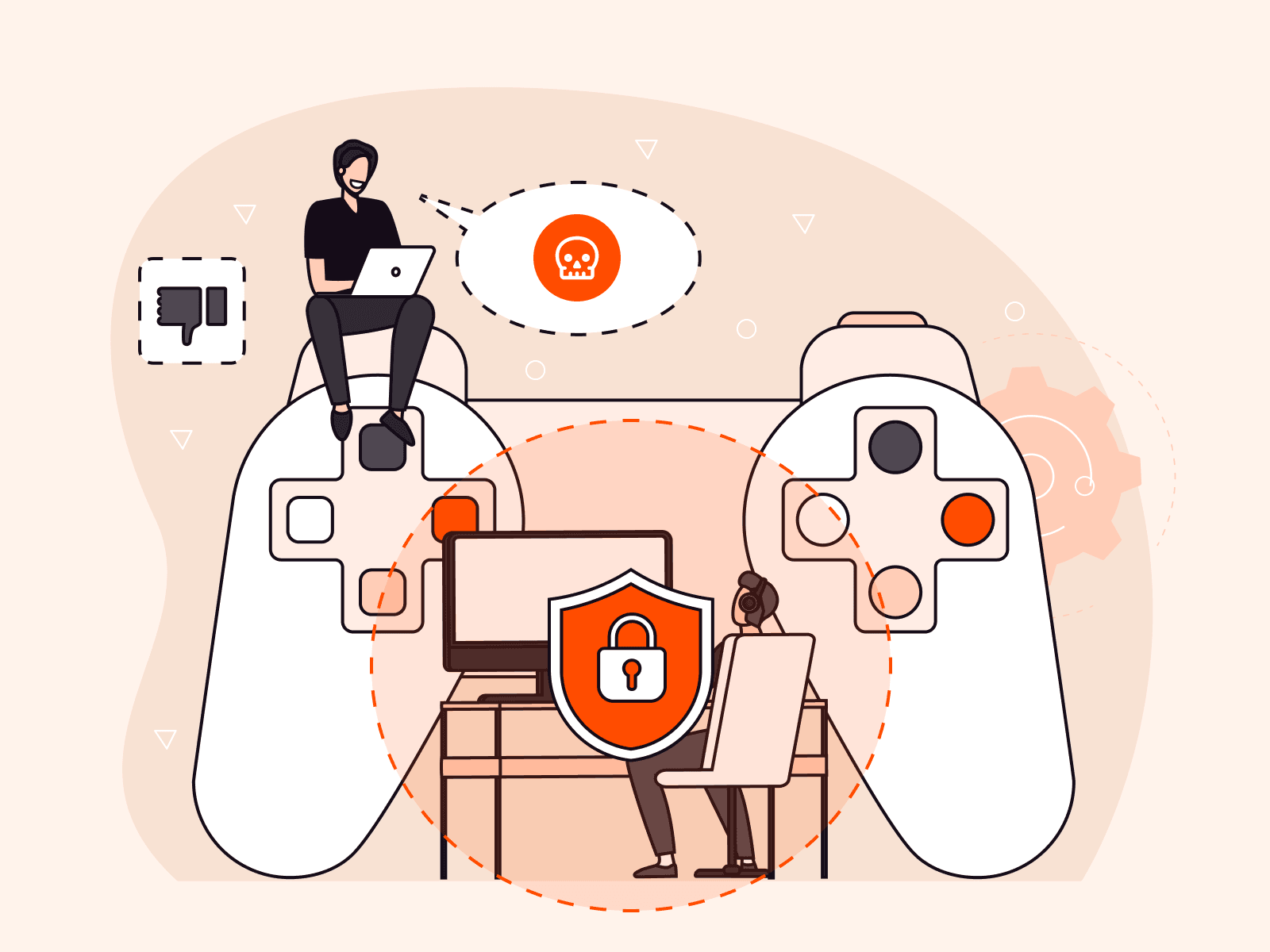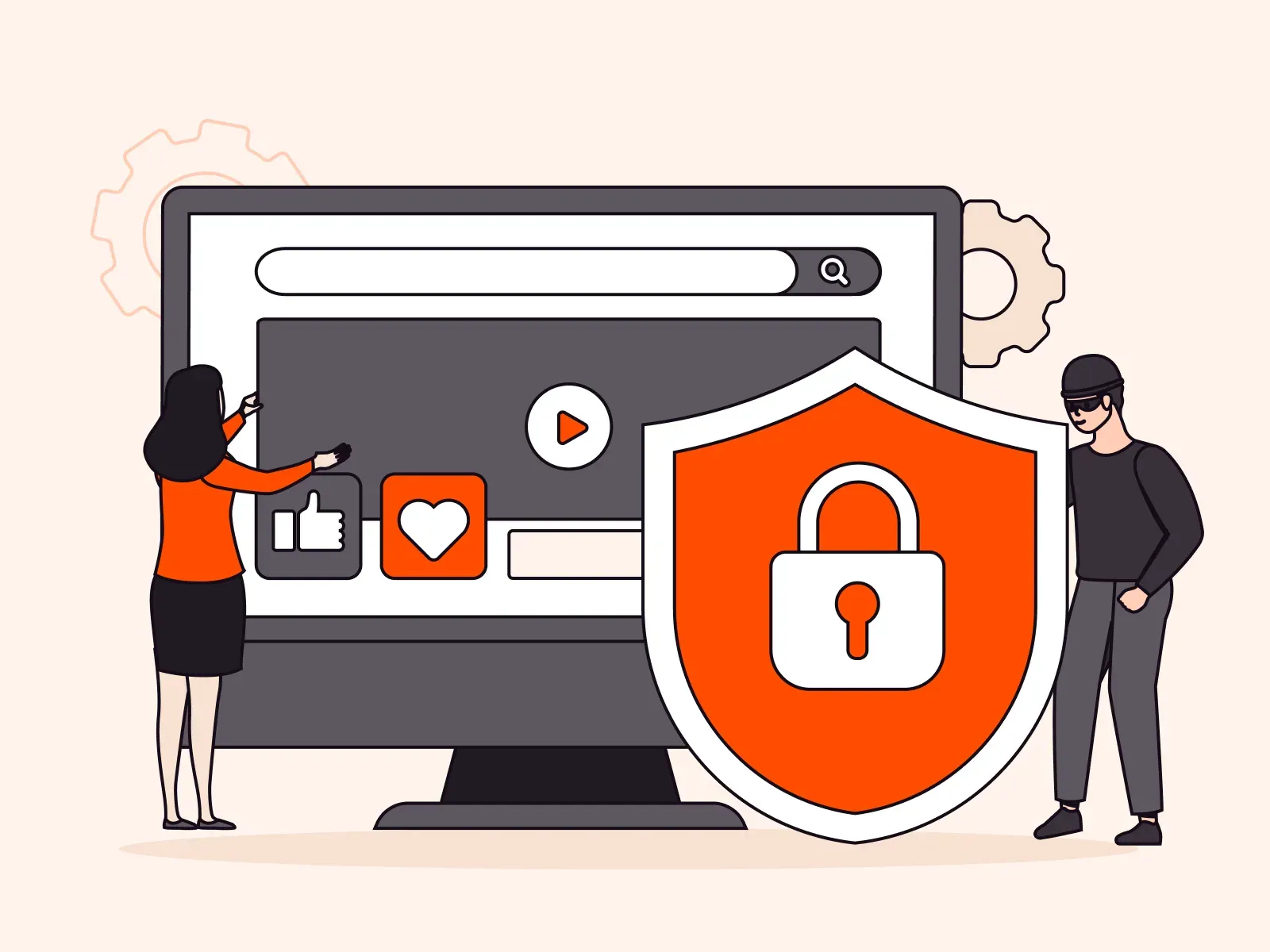In 2024, 94% of web applications harbor high-severity vulnerabilities, and a cyberattack is executed approximately every 39 seconds. This threat landscape necessitates robust, layered protection to fend off malicious bot activity, mitigate DDoS attacks, and protect APIs. Gcore WAAP (web application and API protection) is engineered to meet this need, comprising WAF, bot protection, L7 DDoS mitigation, and API security. In this article, we’ll explain why a WAF alone may not be sufficient and how Gcore’s WAAP solution can safeguard your web applications and APIs from ever-evolving cyberthreats.
Why WAAP Matters: Attackers and Botnets
Attackers leverage increasingly advanced methods, including the deployment of botnets, to launch DDoS attacks. Botnets, networks of compromised computers controlled by a single entity, are commonly used to launch cyberattacks like distributed denial-of-service (DDoS) attacks and malware spreading. The OWASP Top 10 provides an industry-standard and regularly updated list of the biggest threats facing applications.
Traditional Web Application Firewalls (WAFs) provide a critical layer of defense, but they are often insufficient against these complex and evolving threats. A WAF alone may struggle to differentiate between legitimate and malicious bot traffic or may be overwhelmed by the sheer scale of an advanced DDoS attack.
This is where Web Application and API Protection (WAAP) becomes essential. A robust WAAP solution, like Gcore’s, integrates multiple layers of defense to address the multifaceted nature of modern cyber threats. It combines WAF capabilities with advanced bot protection, layer 7 DDoS mitigation, and comprehensive API security. This holistic approach ensures that your web applications and APIs are protected against a wide range of attacks, providing peace of mind in an increasingly hostile cyber environment.
Who Is at Risk?
Everybody with a presence on the internet is at risk, from small businesses to large enterprises. It’s a common misperception that small businesses won’t be targeted by botnets: Malicious bots may harvest data or execute DDoS assaults on businesses of any size and even pick smaller businesses as the target of their choice on the assumption that they’re less protected. Even if you do not process sensitive data, a successful assault may take your business offline and harm your image, both of which can cause lost revenue in both the short and long term.
Can I Just Block All Bots?
No, it’s not a good idea to stop all bots. You want to avoid blocking good bots that perform useful duties such as search engine indexing, you might sabotage your SEO efforts.
This makes a comprehensive WAAP solution crucial for businesses of all sizes. WAAP ensures that defense against harmful bots while allowing beneficial ones to function properly.
Why WAFs Alone Aren’t Sufficient
A web application firewall (WAF) is designed to filter, monitor, and block HTTP traffic to and from a web application. Some businesses believe that a WAF is sufficient because it serves as a frontline defense, identifying and blocking many known attack patterns and mitigating immediate threats to web applications. WAFs are relatively straightforward to deploy and manage, providing a quick way to enhance security without the need for extensive infrastructure changes.
While Web Application Firewalls (WAFs) demonstrably mitigate well-defined threats like SQL injection and cross-site scripting attacks (XSS), their efficacy diminishes in the face of increasingly sophisticated, multi-vector assaults that characterize the contemporary threat landscape. This limitation necessitates the integration of more advanced security measures found in WAAP solutions to ensure complete protection. Additionally, the rise of encrypted traffic has provided a veil for malicious activities, enabling attackers to bypass some of the traditional detection mechanisms that WAFs rely on.
In addition, over 80% of internet traffic today comprises machine-to-machine API calls. Traditional WAF doesn’t protect API calls; a more comprehensive solution is required. Enter WAAP.
What Is WAAP
WAAP (web application and API protection) is a comprehensive security solution designed to protect web applications and APIs from various threats, including attacks like DDoS, SQL injection, and cross-site scripting. WAAP aligns with OWASP (Open Web Application Security Project) guidelines to ensure robust defense against the most critical web application and API security risks.
Let’s discover how a modern WAAP is built and how Gcore WAAP works within each component.
Web Application Firewall
We mentioned above that a WAF alone isn’t sufficient, but it nevertheless remains a cornerstone of a modern WAAP solution. Constant upgrades to WAFs are required to strengthen their resilience, due to the changing nature of cyberthreats. Accordingly, a WAF’s power comes from its capacity to change and adapt using AI, not only from its present capabilities.
Gcore’s WAF is built on a sophisticated foundation:
- Updateable regular expressions and signature engine to ensure continuous updates to the threat detection capabilities, adapting to new vulnerabilities and attack vectors.
- Heuristics and behavioral analytics to anticipate and respond to emerging threats intelligently.
- Coverage of OWASP Top 10 and beyond to extend protection against the most critical web application security risks identified by OWASP, as well as other emerging threats.
- Comprehensive, configurable policies since built-in, up-to-date policies can be customized to meet the unique needs of different applications.
- Advanced rules engine featuring custom rules and device-level fingerprinting for precise threat detection and mitigation.
Bot Protection
Not every bot is malicious. Although there are helpful bots, such as search engine crawlers, there are also harmful bots that may cause serious problems. These malicious actors, such as content scrapers and credential stuffers, pose a serious threat. Bot protection mechanisms must be able to tell the difference between legitimate and malicious bots, permitting useful bots to keep running while blocking harmful ones.
To address the challenges posed by malicious bots, Gcore uses:
- Behavioral analytics: Detailed analysis of behavior patterns allows us to identify and block advanced evasive bots.
- JS challenges and session cookies: These distinguish between legitimate users and bots masquerading as humans.
- Captcha farm and proxy network identification: These tools recognize and mitigate automated traffic originating from captcha farms and proxy networks.
Layer 7 DDoS Mitigation
A barrage of requests sent in an effort to bring down a website is known as a distributed denial-of-service (DDoS) attack. Layer 7 DDoS assaults specifically target the application layer.
DDoS mitigation is an effective defense mechanism that uses various strategies to prevent these attacks. Rate-limiting mechanisms carefully examine each incoming request to determine its validity and volume. Traffic analysis looks for unusual patterns or spikes that may signal an assault. By carefully implementing these procedures, DDoS mitigation prevents harmful traffic from reaching the server and safeguards it from potential attacks.
Gcore’s approach to DDoS mitigation includes:
- Burst identification mechanisms to switch quickly to DDoS mitigation mode when an attack is detected.
- Multi-layer approach to ensure comprehensive protection by covering both regular and API traffic, maintaining service availability even while an attack is occurring.
API Security
Application programming interfaces (APIs), which link different programs and allow data to be transferred, are the backbone of online interactions. However, bad actors may manipulate or monitor these interfaces, resulting in data breaches, unauthorized access, and the potential for significant disruptions to business operations.
API security procedures ensure that every communication is reviewed to check its validity and prevent illegal access. Communications are further protected by encryption, which makes them unreadable to anybody who may intercept them. With these safeguards in place and continual traffic monitoring, API security keeps data exchanges honest by letting only approved messages through.
Gcore’s API security features include the following:
- OWASP API top 10 coverage: API security covers you against the OWASP top 10 vulnerabilities and beyond. This protects against the most critical API-specific risks.
- Machine learning-based IP filtering and profiling: This feature turns on automatically in DDoS scenarios to weed out dubious API traffic by profiling and fine-tuning API security using advanced AI techniques.
How Does Gcore WAAP Work?
All components of Gcore’s solution are intricately and dynamically woven together. Gcore WAAP integrates rules-based and machine learning (ML) behavioral protection. This synergy ensures a robust defense against threats to your applications.
Gcore WAAP solution uses a four-stage process:
- Real-time traffic scanning: Analyzes incoming traffic continuously to detect potential threats
- Traffic verification: Checks traffic against predefined rules to assess its legitimacy
- Validity scoring: Evaluates the legitimacy of requests using predetermined criteria and assigns scores accordingly
- Request blocking: Denies access to any request that surpasses the designated score threshold
Gcore WAAP Features
With Gcore WAAP, your applications are secured with robust, proven protection, featuring:
- Advanced architecture: Two-tier, whole-brain design with edge nodes for fast threat detection and a central intelligence center for strategic management, delivering real-time protection and centralized control.
- Industry recognition: Recognized by Gartner as a leading solution, providing confidence in its effectiveness.
- Deployment flexibility: Infrastructure-agnostic, seamlessly integrating with any CDN, including multi-CDN, on-premise, public cloud, or VPC environments.
- Effortless security: High customizability and automation for efficient operation, with behavioral analysis for automated threat response and reduced false positives.
- API-first approach: Smooth integration with existing security ecosystems and automation tools.
Gcore WAAP Benefits
Gcore WAAP enhances your security posture with precision threat detection, adaptive policies, and real-time security insights, ensuring robust protection for your web applications with the following technical benefits:
- Zero-day support: Protects against unknown vulnerabilities using advanced threat analysis techniques like behavioral analysis and machine learning.
- Virtual patching: Addresses vulnerabilities without code changes by acting as a virtual shield and filtering malicious traffic.
- Precise threat detection: Accurately identifies and stops real attacks with minimal false positives.
- Always-current defenses: Automatic updates and expert-crafted policies keep you protected from evolving threats.
- Real-time insights: Instant visibility into traffic and potential threats for proactive security measures.
- Fast deployment: Built-in policies ensure quick setup and minimize downtime.
- Granular control: Tailor defenses to your specific needs for a perfect security fit.
- 24/7 support: Around-the-clock assistance with security concerns, reviews, and performance tuning.
- Data sovereignty: European data centers simplify compliance with GDPR and PCI DSS.
Conclusion: Protect Your Applications with Gcore WAAP Today
Businesses today need robust, layered protection for their applications. Traditional WAFs are often insufficient against sophisticated threats, necessitating comprehensive WAAP solutions that integrate WAF capabilities with advanced bot protection, L7 DDoS mitigation, and API security. This holistic approach ensures that web applications and APIs are safeguarded against a wide range of evolving cyber threats, providing essential security for businesses of all sizes.
Gcore WAAP offers proven application protection in one robust package. Secure your web applications and APIs against the most sophisticated cyber threats to safeguard your business’ reputation. Contact us today and see how Gcore WAAP can protect your applications and data.
Related articles
Subscribe to our newsletter
Get the latest industry trends, exclusive insights, and Gcore updates delivered straight to your inbox.






